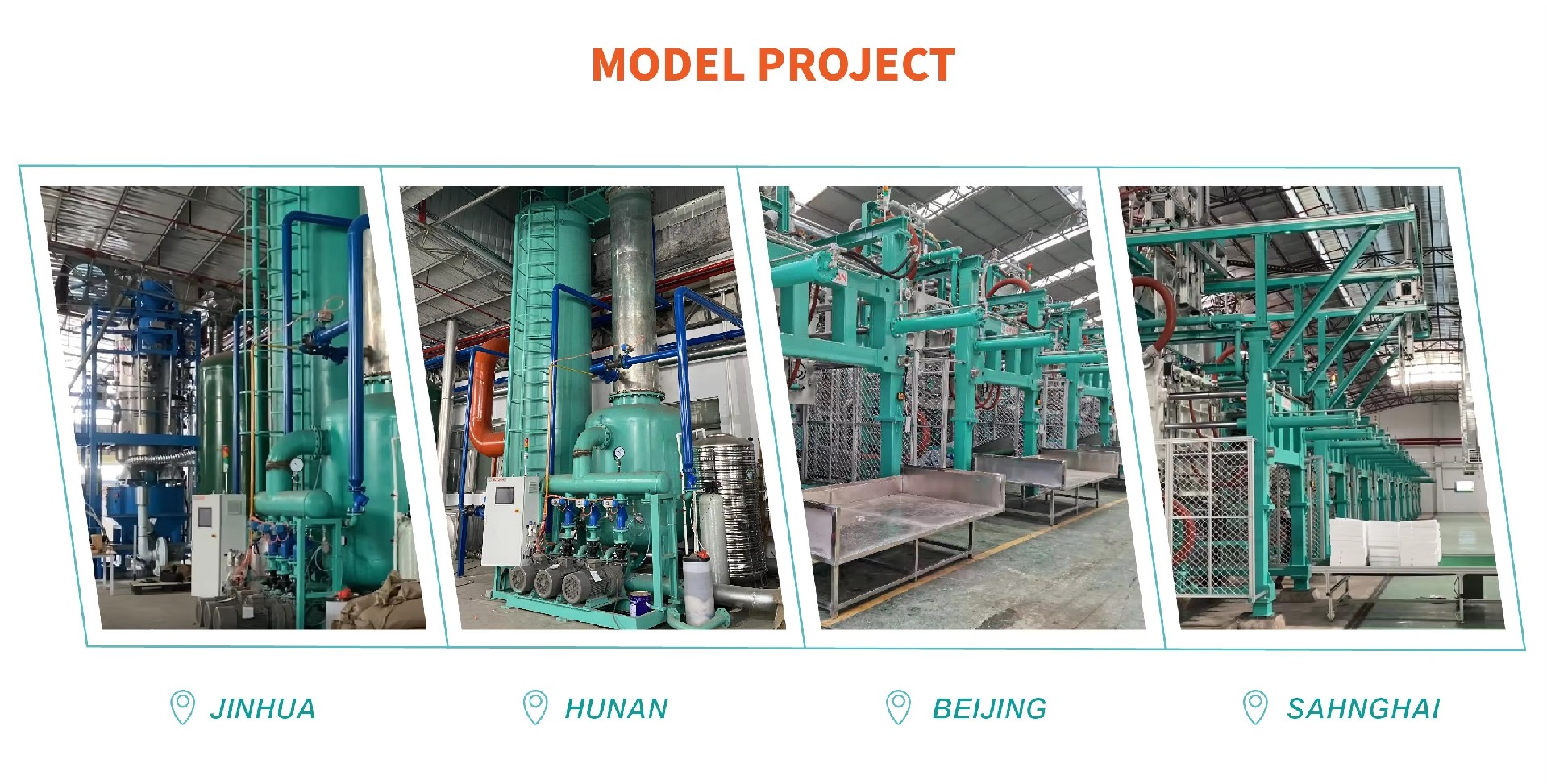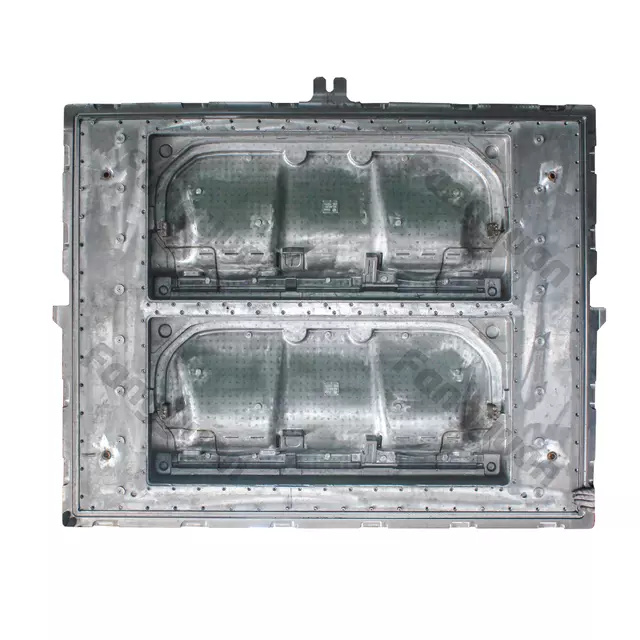
Common problems of external insulation wall – Part 2
Release time:2022-05-04 Click:122
Analysis of common shedding quality problems The building exterior wall insulation system is a composite structural layer. Shedding generally occurs at the junction of different structural layers, such as between the bonding layer and the base layer, between the insulation layer and the bonding layer, and between the plastering layer and the insulation layer. Common shedding phenomena mainly occur in the shedding of the insulation board and the plastering layer. The main reasons for the shedding of the exterior wall insulation system are as follows:
Analysis of Common Shedding Quality Issues in EPS-Based Exterior Wall Insulation Systems
The exterior wall insulation system utilizing EPS (Expanded Polystyrene) as its primary insulation material comprises a complex, multi-layered structural assembly. Shedding, a detrimental phenomenon, frequently manifests at the interfaces between these distinct layers, particularly at the junctures between the bonding layer and the base layer, the insulation layer (EPS board) and the bonding layer, as well as the plastering layer and the insulation layer. Notably, the two most prevalent shedding scenarios involve the detachment of the EPS insulation board and the plastering layer.
To delve into the primary causes underlying the shedding issues in EPS-based exterior wall insulation systems, several factors come into focus:
Adhesion Failure: Poor adhesion between layers is a fundamental reason for shedding. This can be attributed to inadequate surface preparation of the base layer, such as the presence of dust, oil, or moisture, which hampers the bonding process. Additionally, improper application of adhesives or primers, or the use of low-quality materials, can significantly weaken the bond strength.
Mechanical Stress: EPS insulation boards, though lightweight and effective, can be susceptible to mechanical stress caused by wind loads, temperature fluctuations, or moisture-induced expansion and contraction. These stresses, if not adequately managed through reinforcement or proper detailing at the interfaces, can lead to the gradual separation of layers.
Installation Errors: Improper installation techniques, such as inadequate compression of the insulation boards against the base layer, or failure to ensure uniform application of adhesives, can contribute to shedding issues. Moreover, incorrect placement of fasteners or anchors can also weaken the overall structural integrity of the insulation system.
Material Quality: The quality of the EPS insulation boards, adhesives, and plastering materials used significantly impacts the durability and performance of the insulation system. Inferior materials may not withstand the rigors of exposure to the elements, resulting in premature shedding.
Environmental Factors: Prolonged exposure to harsh weather conditions, including extreme temperatures, humidity, and UV radiation, can degrade the materials used in the insulation system, accelerating the aging process and ultimately leading to shedding.
In light of these causes, it is imperative to address each factor during the design, material selection, installation, and maintenance phases of EPS-based exterior wall insulation systems. This includes ensuring proper surface preparation, selecting high-quality materials, adhering to strict installation guidelines, and implementing regular maintenance checks to mitigate the risk of shedding and ensure the long-term performance and durability of the insulation system.

1. Adhesive factors Among the shedding quality problems of the exterior wall insulation layer, the insulation shedding problem caused by adhesive factors is the most common.
(1) The quality of the adhesive is too poor: The insulation material of the wall insulation system is mostly a polymer foam board. In order to ensure the adhesion of the insulation material to the base wall, a polymer mortar with a polymer emulsion or dispersible glue powder is used. The polymer content in the adhesive will affect the adhesive’s adhesion, water resistance, etc., but the cost is high. Some companies in the domestic market will reduce the amount of polymer used, sacrificing quality in exchange for low cost, which directly leads to the adhesive performance not meeting the 0.1MPa requirement specified in the standard.
(2) Improper or insufficient adhesive application leads to a small area of insulation board: Adhesive application to insulation board is the main method of fixing the insulation system, and the bonding area of insulation board directly affects the bonding firmness of the insulation system. Insufficient adhesive application or incorrect application method during construction will result in the effective bonding area between the insulation board and the base wall failing to meet the specified requirement of more than 40%.
(3) Construction factors or base wall reasons lead to false bonding of insulation board. Due to the operation of construction workers or excessive deviation of wall flatness, the insulation board may be falsely attached. Incorrect application method may also easily lead to false bonding.
2. Quality problems of external wall insulation layer materials
(1) Poor bonding of insulation board surface: Due to the forming process or material characteristics, the surface finish of insulation board is relatively high, and the bonding with adhesive or plastering mortar is too poor, such as XPS board, PU, etc.
(2) The insulation board has too low strength: If the insulation board has too low strength, the insulation system will be damaged and fall off from the insulation layer. Therefore, national standards or industry standards have set requirements for the tensile bonding strength of insulation materials. For insulation materials with low strength, such as rock wool, certain reinforcement measures should be taken. In addition, materials such as insulation mortar and foamed cement board will have a significant decrease in strength after absorbing water, so they should also be used in exterior wall insulation systems.
(3) The quality of insulation materials is unqualified: Taking EPS board as an example, the industry standard clearly stipulates that the bulk density per cubic meter should not be less than 18 kilograms and the tensile bonding strength should not be less than 0.1MPa. In fact, many projects cut corners and use low bulk density EPS boards when applying them, resulting in the insulation board’s tensile strength being too low, which cannot meet the insulation system’s self-weight and negative wind pressure requirements, resulting in the insulation board breaking and falling off in the middle.
3. Base wall factors: The base wall strength is too low, or there are floating dust, oil stains and other materials on its surface that affect the adhesion of adhesives, resulting in poor adhesion between the insulation material and the base wall, and the insulation material falls off on the surface of the base wall. Secondly, when the flatness deviation of the wall surface is large, it is easy to cause the insulation board to fall off.

4. Anchoring problems
(1) Anchor bolts are not designed or the number of anchor bolts is insufficient: For the external insulation system of the building exterior wall, insulation auxiliary fixing is usually used, especially for coastal areas with large negative wind pressure and projects using insulation materials such as rock wool, XPS, and phenolic board. If the bonding mortar is used alone, there will be a risk of insulation board falling off.
(2) The anchor bolt anchoring depth is not enough or the anchoring method is incorrect: When designing and constructing the anchor bolts, the base wall type is not considered. For example, for special walls such as aerated concrete or hollow block walls, ordinary expansion anchor bolts are used or the anchor bolts are not deep enough into the wall, resulting in insufficient anchoring force between the anchor bolts and the base wall, resulting in the insulation system falling off.
5. The design of the finishing layer is unreasonable, and the self-weight causes the surface to fall off. The external insulation system of the wall is a systematic project. In the classic EIFS system, the external finishing is a coating system. In China, in order to emphasize the decorativeness, heavy finishing such as bricks and stones will be constructed on the outside of the plastering layer of the external insulation system. When the self-weight of the finishing layer is too large, the shear force generated on the insulation material will cause the insulation system to fall off, and the poor quality or deformation of the adhesive of the finishing layer itself will cause the finishing layer to fall off.
6. The plastering layer construction is dry-laid mesh cloth, which causes the plastering layer to fall off. When the plastering layer of the wall insulation system is constructed, the workers do not standardize the construction, directly dry-lay the mesh cloth on the insulation board surface, and then apply the plastering mortar, resulting in incomplete adhesion of the plastering mortar to the insulation board surface, and the overall plastering layer is very likely to fall off.
7. The insulation system falls off due to construction environment factors. The external wall insulation system has requirements for the construction climate environment during construction. If the temperature is too low or it is raining or snowing, the polymer mortar will suffer from freeze-thaw damage and the strength will not meet the design requirements, which can easily lead to the insulation system falling off.
Solutions to the problem of shedding quality The various reasons for the shedding quality problem of building exterior wall insulation are mainly controlled from three aspects: materials, design and construction, so as to reduce the hidden dangers of shedding quality of the insulation system.

1. Do a good job in the selection and control of insulation system materials. Control the quality of polymer mortar, insulation board and anchor bolts in the building exterior wall insulation system. The adhesive should be scientifically proportioned to ensure the polymer content and supporting additives; the quality of the insulation board should be qualified, and corresponding measures should be taken to strengthen the rock wool, XPS board, PU board, etc. For example, the rock wool board should strengthen the anchor bolt fixation, and the XPS board should be brushed with interface agent to improve the adhesion, etc. When selecting the anchor bolt, the anchor bolt type and anchor bolt depth should be selected according to the base wall type to ensure that the anchor force requirements are met to prevent the anchor bolt anchor force from failing and failing to achieve the anchoring effect.
2. Reasonable design of wall insulation system. Wall insulation project is a systematic project. The matching of each structural layer should be considered during design. For materials with low strength or poor adhesion, anchor bolts should be designed to reinforce and improve the bonding rate of insulation board. The exterior decoration should be matched with the insulation system. It is advisable to design a coating system with good air permeability. Flexible tiles should be used for the designed tiles, and the separation joints should be reasonably designed.
3. Strengthen construction control. As a weak link in the quality control of building wall insulation projects, before construction, the base wall inspection and acceptance should be done to ensure that the tensile bonding strength of the base meets the requirements of the specification, the flatness of the wall is within the controllable range, and there is no hollowing, powdering, oil stains and other phenomena that affect the pasting; during insulation construction, it is necessary to strengthen the construction process control to ensure the coating rate of the bonding mortar, avoid the insulation board false pasting, anchor bolt false hitting, dry hanging net and other irregular practices; before and after the construction of the insulation system, attention should be paid to weather changes and finished product protection to avoid rain erosion or sun exposure before the mortar solidifies.

It is understood that there may be one or more reasons for the external wall insulation layer to fall off. Long-term cracking and leakage, resulting in a decrease in mortar strength and insulation material strength, may all lead to the insulation system falling off. The quality control of the external wall insulation system should be strengthened from the aspects of design, materials, and construction to reduce construction quality risks and create excellent building external wall insulation projects

Hot products